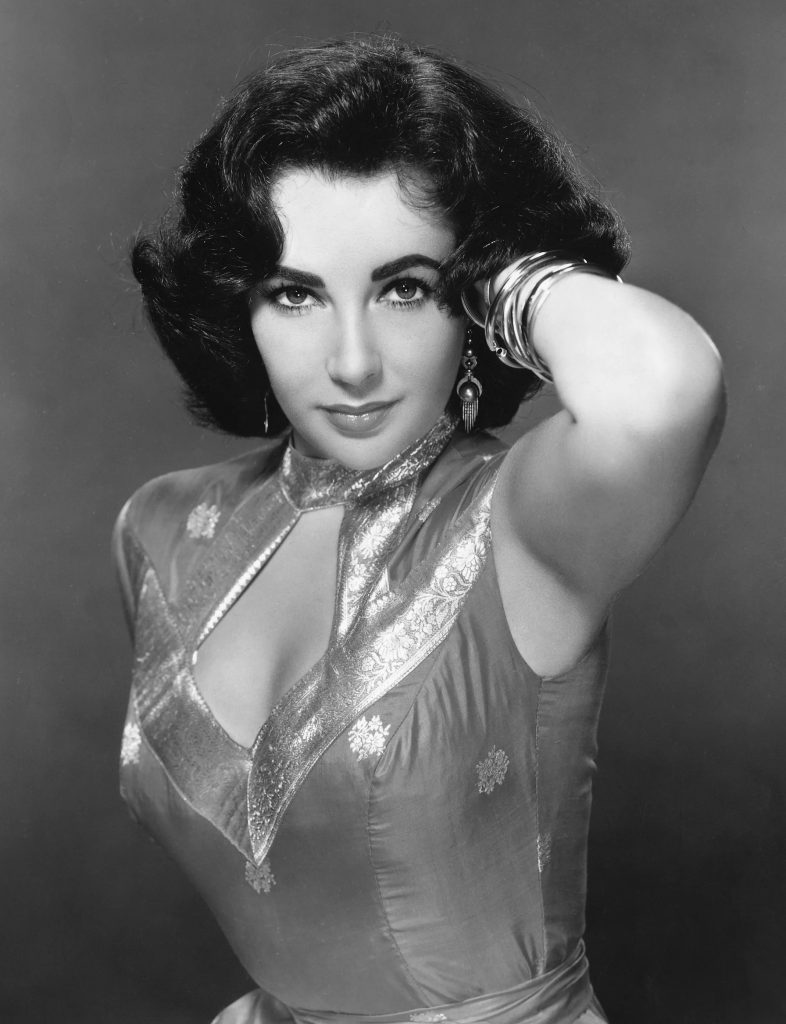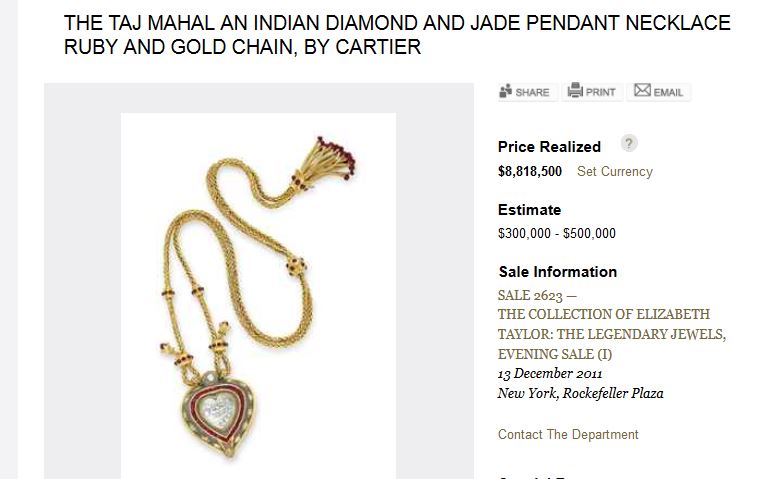Art & Exhibitions
Elizabeth Taylor Trust Sues Christie’s Over $8 Million Botched Jewel Sale


Eileen Kinsella

Elizabeth Taylor jewels are back in the news.
Christie’s 2011 sale of the collection of Elizabeth Taylor was a landmark event celebrating the iconic Holllywood star’s life with back-to-back auctions of her art, fashion, and jewels (See: 10 Game-Changing Auctions). The evening jewels sale alone achieved $115.9 million, the most valuable jewelry auction in history and seven new world auction records were established.
But now it seems that some of those “record” results have become a royal embarrassment.
Trustees for Taylor’s Southern Trust (Barbara Berkowitz, Timothy Mendelsohn, and Christopher Wilding) have now sued Christie’s in federal court over the house’s alleged handling of the sale of the actress’ so-called “Taj Mahal” diamond, a 17th-century necklace that was given to her by then-husband Richard Burton for her 40th birthday. At the December 13, 2011 sale, the price of the necklace skyrocketed to $8.8 million, shattering the estimate of $300–500,000 and setting a world record for an Indian jewel. (See: The 10 Most Expensive Trophies at Auction in 2014)

The Cartier-designed Taj Mahal necklace was however one of several sales Christie’s canceled following the auction, in this case because the anonymous buyer demanded his money back after determining it had not actually belonged to a Mughal emperor. Christie’s refunded the money, much to the disappointment of the trustees who claim that they should not have done so because neither they nor Christie’s ever guaranteed the diamond’s age or past Mughal provenance and thus were under no obligation to cancel the sale and refund the buyer’s money.
According to the Christie’s catalogue entry: “The literal translation of the Persian inscription on the stone has three entries: Nur Jahan Baygum-e Padshah; 23; and 1037. This means that Nur Jahan was a lady of the Padshah, while the number 23 refers to the regnal year of Shah Jahangir, which was indeed 1037, equivalent to 1627-28 A.D. Research indicates that Shah Jahangir had the stone engraved with his wife’s name, Nur Jahan, although it is not known whether in fact Nur Jahan ever owned or wore the jewelry.” This supports Christie’s.
Christie’s violated its own policies when it rescinded the sale, the trustees complaint states. “Despite facing no credible threat of legal liability, Christie’s nonetheless rescinded the sale of the diamond. In doing so, Christie’s not only deviated from its usual business practices and its own established policies, but it violated its obligations to the trust, all in an effort to appease the buyer.”
Why would Christie’s do this? Chances are indeed yes it was a very important buyer which they did not want to alienate–probably someone from the Gulf where indian jewelry is much prized among the ruling royal families.
After Christie’s rescinded the sale, it allegedly demanded that the trustees return the money paid for the necklace ($7 million, which is slightly lower than than the final price with premium since that is stripped out) but the Southern Trust says it refuses to do so. In retaliation, the trustees say, Christie’s has refused to pay the proceeds from the sale of one of Taylor’s Bulgari rings.
The Southern Trust is asking the court to affirm the two sides’ rights and responsibilities under the terms of the consignment agreement as well as an order that it can keep the proceeds of the Taj Mahal sale, or else trade these for return of the necklace. They are also seeking an explanation of the canceled sales, the return of five items they say are missing, and $2.9 million for the Bulgari ring.
In a statement emailed to artnet News, Christie’s said it was “pleased to create a landmark auction event on behalf of the Elizabeth Taylor Trust that produced over $183.5 million in proceeds for the beneficiaries of the Trust — the friends and family of Elizabeth Taylor. This suit stems from Christie’s seeking the return of a small portion of these proceeds due to the cancellation of a single item from that sale, and Christie’s looks forward to a speedy resolution of this matter.”